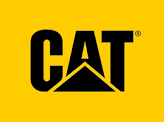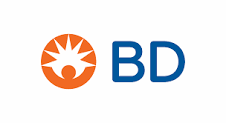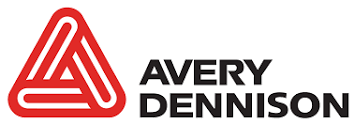Passive Perspectives
Stock market indexes provide a convenient way of capturing the general mood of the financial markets and are widely quoted and followed. Current and recent values of the key averages and indexes are quoted daily on financial websites, in the financial news, in most local newspapers and on many radio and television news programs. They are used as performance benchmarks for actively managed accounts and funds. They also take the form of investments through index funds and Exchange Traded Funds (ETFs) which attempt to replicate their performance.
The notion that increased passive investing may lead to heightened correlations in prices raises the importance of diversification beyond passive investment products.
One of the most profound developments in the stock market in the last two decades has been the growth of indexed based investments and the increasing prevalence of passive fund management. Though the assets of traditional mutual funds have increased three-fold in the last 17 years, the assets of ETFs, funds that are typically indexed, have grown 130-fold.
The oft-cited Standard & Poor's 500 Index has become the benchmark for estimating or calculating the “market return” and is comprised of 500 large companies (not necessarily the largest) weighted by the market value of each stock in the index. The problem with capitalization weighted indexes is that larger capitalization stocks can make the index vulnerable to concentration risk. As a company outperforms its index, its relative weight in the index will increase. Given the number of ETFs and index funds that are tied to the S&P 500, this becomes a circular and expanding problem.
As an example of concentration risk during the first quarter 2018, just 5 stocks (Alphabet, Amazon, Apple, Facebook and Microsoft) at one point accounted for 45% of the S&P 500’s year-to-date return through mid-March. The overall tech sector, in the first quarter, accounted for almost a 27% weighting in the S&P 500, making it by far the largest sector. Financial stocks, in second place, accounted for 16.8%. Prior to the selloff late in the quarter, the continued outperformance of technology-oriented companies was somewhat surprising in light of last year’s performance. The tech sector increased 37% in 2017, nearly doubling the S&P 500’s advance, with many investors expecting the rally to stall or technology stocks to be overtaken by other sectors. Subsequent negative volatility experienced at the end of the first quarter in the tech sector has underscored the concentration risk in the S&P 500 index.
In addition to issues of asset concentration, another concern regarding the growth of passive investment vehicles based on the S&P 500 relates to the potential mass movement of assets. Passive investments growth benchmarked to the S&P 500 has largely occurred during one of the longest sustained bull markets on record. There is over $7.8 trillion benchmarked to the S&P 500, much of which has accumulated without any sustained periods of downside volatility.
ETFs impact on trading volume has reached significant proportions. In 2016, ETFs accounted for nearly one-half of all trading in U.S. stocks. Many stocks within the S&P 500 index are simultaneously bought and sold and tend to move together in price throughout the trading day. What is indeterminate is the impact an extended downward market would have on these passive investments tied to the S&P 500 as well as other indexes. The notion that increased passive investing may lead to heightened correlations in prices raises the importance of diversification beyond passive investment products.
Active managers such as Delta play an increasingly important role in ensuring that the markets remain efficient. Our investment decisions are based on purchasing companies with strong and expanding cash flows plus good balance sheets managed by competent executive teams who are efficient operators and capital allocators. A portfolio assembled using these criterion purchased at a discount to normalized economic value should be relatively better positioned to weather periodic bouts of volatility in markets increasingly characterized by passive investing.
March 28, 2018
Company Comments
Comments follow regarding common stocks of interest to clients with stock portfolios managed by Delta Asset Management. This commentary is not a recommendation to purchase or sell but a summary of Delta’s review during the quarter.
Duke Energy Corporation { DUK }
Duke Energy has experienced several pivotal years transitioning to a regulated electric and natural gas infrastructure business. Beginning with its merger with Progress Energy, completed in 2012, Duke strengthened its core Carolinas market and expanded its coverage territory into Florida. Duke now generates and distributes electricity across a broad region encompassing parts of the Carolinas, Florida, Ohio, Indiana and Kentucky. The utility has a diversified customer base: residential 42%, commercial and industrials/textiles 49% and wholesale 9%. As a result of the merger, Duke now has greater operating efficiencies, a more diverse and flexible power generation fleet and a more diverse geographic footprint.
In August 2014, Duke sold its non-regulated Ohio assets to Dynegy for $2.8 billion in cash, a level well above investor expectations. Returns in Ohio were low, and revenues had been steadily declining. Under legislation in effect since 1999, Ohio customers could switch electricity providers at any time to capture the benefits of lower rates.
In 2016, the company sold its assets in Latin America and completed its acquisition of Piedmont Natural Gas, a premier natural gas company based in Charlotte, NC, that has given it critical mass in the gas distribution sector. Today, Duke’s power portfolio operates in a regulatory approved monopolistic environment. In a regulated market, state commissions are responsible for approving a utility’s rate base and allowable operating expenses. While rate-based rulings are supposed to be in the public interest, commissions also must allow a utility to earn an adequate rate of return to compensate it for investment in plants and environmental improvements. With guaranteed returns and low variability in earnings, regulated entities such as Duke carry less risk than those operating in a competitive market. Regulated utilities, however, lack upward pricing power absent a new rate setting proceeding with state regulatory commissions.
With guaranteed returns and low variability in earnings, regulated entities such as Duke carry less risk than those operating in a competitive market.
Consequently, state regulatory commissions are an important factor in securing an adequate return on investment. Based on recent decisions, the commissions in North and South Carolina appear to be reasonable and balanced about the need for compensatory return on capital and the public’s desire for low electric rates. Duke should benefit from favorable regulatory regimes in the Carolinas and Florida. Regulatory risk remains a key uncertainty, particularly given Duke’s aggressive capital expenditure plans during the next few years.
Duke’s higher level of capital expenditures will continue at least for the next few years, which should help growth, assuming constructive rate case outcomes. The company is taking advantage of historically low interest rates by issuing debt to finance modernization programs. However, construction costs for new power plants have increased markedly since 2000. The risk from cost overruns is that regulatory commissions may not allow a rate increase on cost overruns.
Also in August 2014, the North Carolina legislature passed the Coal Ash Management Act. The law requires closure of all coal ash basins in the state within 15 years, all of which are leaking contaminants into underground water. It is likely that the cleanup will result in higher costs for Duke’s 3.2 million North Carolina customers. Duke is working on an environmental remediation plan that must be reviewed and approved by North Carolina state environmental authorities.
Successful completion of a relatively aggressive capital expenditure program should enable the company to achieve revenue growth in the low single digits. Our valuation assumes Duke achieves favorable regulatory outcomes on future rate cases. Demand challenges and rising costs are expected to pressure profit margins offset by operating efficiencies and better generation flexibility post-merger. We anticipate a long-term annualized rate of return on Duke’s stock of approximately 8%.
Founded in 1925, Caterpillar (CAT) is the world’s largest manufacturer of construction and mining equipment, with 2017 sales over $45 billion. The company also manufactures and sells diesel and natural gas engines, industrial gas turbines and diesel-electric locomotives. The company’s products are used in road building, mining, logging, agriculture, petroleum and general construction. Specific products include tractors, scrapers, graders, compactors, loaders, off-highway truck engines and pipe layers. The company’s global reach is evidenced by its workforce with more than 56,000 of its more than 98,000 employees located outside the U.S.
Today, CAT controls approximately 19% of the global new construction equipment market. The company has built its product portfolio and significant scale through a combination of organic initiatives and acquisitions. CAT is the largest or second-largest manufacturer of virtually every product it makes. It generates a high return on capital. We believe the Caterpillar brand, manufacturing scale and vast dealer network will help lead to market share growth, healthy global expansion and high profitability.
Caterpillar’s equipment is distributed through a worldwide network of independent dealers of which 48 are located in the U.S. and 123 are located in over 192 countries. The strong dealer support network is a key component to Caterpillar’s success and is a competitive advantage. Many equipment customers state that responsive after-market product support is a key differentiator in the purchasing decision. Equipment downtime on a schedule-driven project can cost millions of dollars.
We believe the Caterpillar brand, manufacturing scale and vast dealer network will help lead to market share growth, healthy global expansion and high profitability.
Caterpillar’s wholly-owned finance subsidiary CAT Financial provides wholesale and retail financing alternatives to customers and dealers around the world. CAT Financial issues debt with a similar interest rate maturity profile to its receivables. It also employs interest rate swap agreements to manage interest rate risk and, in some cases, lower its cost of borrowed funds. Lending decisions are based on a customer’s credit history, financial strength and intended use of equipment. While only a small part of revenues at approximately 5%, this segment typically contributes double its weight in terms of operating profit.
The company faces a range of operational and financial risks. Performance can be impacted by rising interest rates, unfavorable exchange rate movements, declining commodity prices and economic weakness. Longer-term challenges include regulatory emissions standards requiring CAT to make significant investments in R&D to meet stricter requirements. In addition, CAT faces more competition in its faster-growing international markets.
China’s appetite for commodities is a key driver of global commodity prices. Further, construction made up approximately 19% of Chinese gross domestic product (GDP) in contrast to a more mature country such as the United States where normalized construction spending is only 7% of GDP. With construction and resource segments comprising more than 50% of Caterpillar’s sales, shares have tended to move with commodity prices. Continued infrastructure improvements globally should bode well for Caterpillar over the long term. The company continues to expand its manufacturing facilities in emerging markets and is increasing its exposure to the mid-tier markets through simpler, non-Caterpillar branded equipment to appeal to the cost conscious buyer.
We believe the company has sustainable long-term competitive advantages and can grow revenue in the low single digits over the next decade. Efficiencies gained through leaner manufacturing processes and competitive returns from research and development spending should enable the company to experience cash flow margins in the upper teens. Based on these assumptions, our financial model indicates that at the current stock price Caterpillar’s stock offers a potential long-term annual return of close to 5%.
Becton Dickinson & Company { BDX }
Becton is one of the leading medical device companies supplying a diversified mix of basic and sophisticated products throughout the world. The majority of Becton’s sales are in what are called “sharps,” which consists of safety needles, ultra-thin pen needles, hypodermic needles, syringes, catheters and related equipment, while the remainder is in infusion systems, medical dispensing technologies as well as diagnostic and research instruments. Approximately 42% of sales are in foreign markets.
The company maintains the largest market share of sharps worldwide based on the quality of its products, innovation, worldwide service capability and lower cost. Becton has innovated in sharps for 100 years and continues to push the technology forward. The last major innovation was in the field of safety devices, which reduces the potential for healthcare worker needle accidents. Expansion opportunities remain in foreign markets due to slower adoption of safety guidelines and the continuing need to minimize the spread of infectious diseases in developing countries.
The essential and recurring nature of Becton’s medical products, which account for almost half its total sales, allows the company some relative stability in revenues despite the tougher medical technology spending environment. We believe this business will continue to generate strong free cash flow, which management has historically deployed wisely.
To broaden its product portfolio and strengthen its relationships with hospitals, the company has made two significant acquisitions. Most recently in December 2017, Becton acquired C.R. Bard, which specializes in vascular, urology, oncology and surgical specialties. Bard is complimentary to Becton from both its product portfolio and geographic footprint. The acquisition expands Becton’s product portfolio toward its stated strategic pillars of medication management, infection prevention, chronic disease management and global expansion.
The essential and recurring nature of Becton’s medical products, which account for almost half its total sales, allows the company some relative stability in revenues despite the tougher medical technology spending environment.
In March 2015, Becton acquired CareFusion creating a global leader in medication management, delivery, and patient safety solutions. CareFusion focuses on medication management, infection prevention, operating room and procedural effectiveness and respiratory care. CareFusion maintains the No. 1 market position in many of its product categories, especially in infusion pumps and medication dispensing equipment, where it is estimated to hold 25% and 70% global share, respectively.
The acquisitions of C.R. Bard and CareFusion are transforming Becton into a healthcare solutions and systems company that strives to be a partner to its customers and improve healthcare outcomes and efficiencies. Becton’s market position and global manufacturing and distribution network provides good economies of scale in a capital-intensive business.
The company plans to leverage its global scale to expand both C.R. Bard and CareFusion products into international markets where exposures are currently limited.
Becton faces a number of challenges, including the integration of C.R. Bard, which is a major acquisition for Becton. Sizable synergies must be realized on both the revenue and cost side for an adequate return for investors. Further, hospital buying groups are consolidating to increase their purchasing power with suppliers and improve operating efficiencies at their hospital networks. Longer term, the major risk to Becton is the commoditization of sharps, which Becton continues to combat through innovation, such as safety-engineered devices and ultra-thin pen needles. In addition, Becton faces growing competition from medical product manufacturers with sizeable research budgets, particularly in fast-growing segments. In healthcare, there is always the risk that competitors create more innovative products that disrupt the industry by replacing existing products.
We feel confident assuming higher growth in Becton’s more innovative businesses, such as medication management, drug dispensing technologies and diagnostics with more modest growth in its maturing needle businesses. The population of the world is growing and in major industrialized nations it is aging, which implies medical equipment will be in strong demand. Based on these assumptions, our stock valuation model indicates Becton’s current stock price offers a long-term average annual rate of return of nearly 8%.
Avery Dennison Corporation { AVY }
Avery Dennison is the leading manufacturer of pressure-sensitive labeling materials. The company is also one of the world’s largest producers of retail apparel ticketing and branding systems, radio frequency identification (RFID) inlays and specialty tapes. Avery has a significant global presence with approximately 200 manufacturing and distribution facilities in 50 countries and product sales in 89 countries. Nearly 75% of revenue is derived from international markets, including emerging markets.
The company maintains a dominant market share position in its two main businesses: pressure-sensitive materials, and retail branding and information solutions. Avery’s specialization, superior product offerings and effective customer service should continue to strengthen its relationships in these businesses. Although both business segments have reached maturity in developed markets, Avery continues to expand its already significant international presence, particularly in Asia where it has had a large presence since 1995. Long term, these economies should continue to expand and the demand for packaged goods and apparel likewise will expand. In addition to adding new regional partnerships, Avery grows as its multi-national customers expand into new, faster growing regions.
The company’s technical and engineering expertise have led to innovative new products, such as clear film labels and thinner, more flexible labels that conform to oddly-shaped consumer packages and bottles.
Avery’s size gives it a narrow competitive advantage. The firm’s extensive global distribution network and customer relationships further strengthen its advantages over its competition, particularly with large consumer products manufacturers such as P&G. These relationships can be “sticky” due to the tailored servicing involved. Meeting precise customer specifications and formats increases switching costs.
Pressure-sensitive materials are Avery’s most important business segment and contribute nearly 75% of company profits. Avery is more than twice the size of its nearest competitor. The company’s manufacturing scale enables Avery to obtain operating efficiencies that generate a premium profit margin over its competitors. The company’s technical and engineering expertise have led to innovative new products, such as clear film labels and thinner, more flexible labels that conform to oddly-shaped consumer packages and bottles. This sector is a faster growing segment of the market with premium operating margins. The proprietary technology is important to consumer products manufacturers for brand awareness and product appeal on the shelf. We expect the company will continue to benefit from the growing shift from glue-applied paper labels to flexible clear film labels on consumer products packaging and bottles.
Given Avery’s concentration in mature markets and its increasing market share in faster-growing emerging markets, we have assumed the company can grow revenue approximately 3.6% annually over the next decade. At this pace, given the company’s operating efficiencies, we believe cash flow margin can average approximately 11.5% during this period. With the appreciation in the stock price, we’ve recently trimmed our position. Based on these assumptions, our stock valuation model indicates Avery’s current price offers a long-term average annual rate of return just over 3%.
Nestlé is the largest food and beverage company in the world with operations spanning the globe. The company is a leading player in several categories including beverages, dairy products, confectionery, pet food and infant nutrition, among others. More than 20 of its brands generate in excess of $1 billion each in annual sales. The company has been very successful at establishing positions in growing product lines, generally through acquisition, and then nurturing those brands to further prominence.
The company’s advantages include its possession of leading brands, significant economies of scale and an extensive global distribution network. Nestlé controls the No. 1 or No. 2 global market position in the majority of its categories, which generally have low private label competition. The company’s unmatched investment in research and development has driven innovation, particularly toward differentiated health and wellness products. Nestlé’s strong brand support should enable it to improve its market position. Substantial marketing investment and its market share gives Nestlé a relatively strong competitive position to negotiate with retailers for primary shelf space.
Nestlé is a core supplier to grocery stores across the globe, and its distribution network is extensive. The company’s decades-old global operations and investments have created meaningful scale and dense distribution networks and have established brand reputation in 191 countries, including a significant presence in faster growing emerging markets. The company has operated in most of its countries and markets for generations with consumer and supplier relationships dating back decades.
The company’s technical and engineering expertise have led to innovative new products, such as clear film labels and thinner, more flexible labels that conform to oddly-shaped consumer packages and bottles.
Nestlé’s superior geographic and category mix should allow it to grow faster than most of its peers. Further helping drive growth will be healthy, convenient products, premiumization in developed markets and affordable high-quality nutrition in emerging markets. The company is heavily exposed to emerging markets to the tune of an estimated 40% of sales. The company’s focus on localized distribution networks, manufacturing and raw material sourcing should position Nestlé for continued growth and high margins in these markets.
Nestlé faces its share of challenges, including the consolidation of its retail customer base. The proliferation of low price store brands continues to be a threat industry-wide, especially with hard discounters such as Aldi growing throughout the U.S. Consumers are increasingly gravitating towards natural and organic foods. They also are buying more fresh foods, as opposed to frozen, processed and packaged foods. This trend has had a negative impact on all food manufacturers, including Nestlé.
A company-specific challenge for Nestlé is also one of its strengths. Its size could cause the company to become too slow to fully take advantage of opportunities or resolve missteps in execution. Nestlé addresses this challenge through management improvement programs aimed at continually improving global operating efficiency while allowing for decentralized management in localized regions. While decentralization may lead to operating inefficiencies on occasion, it provides important flexibility in a company of incredible size. Nestlé still maintains industry-leading growth and possesses an enviable profit margin.
Given our expectations for worldwide growth in food and beverage markets and its mix of faster growing, high margin categories, we believe Nestlé can grow revenues at 4% annually over the next decade and maintain its operating margin in the mid-teens. We believe Nestlé will be able to offset pricing pressures from both major retailers and increased competition through the continued implementation and execution of a number of cost efficiency programs adopted in recent years. Based on these assumptions, our stock evaluation model indicates Nestlé’s current stock price offers a long-term average annual rate of return of approximately 7.0%.
For a PDF version of this article please click here.
Dated: March 28, 2018
Specific securities were included for illustrative purposes based upon a summary of our review during the most recent quarter. Individual portfolios will vary in their holdings over time in relation to others. Information on other individual holdings is available upon request. The information contained herein has been obtained from sources believed to be reliable but cannot be guaranteed for accuracy. The opinions expressed are subject to change from time to time and do not constitute a recommendation to purchase or sell any security nor to engage in any particular investment strategy. Any projections are hypothetical in nature, do not reflect actual investment results and are not a guarantee of future results and are based upon certain assumptions subject to change as well as market conditions. Actual results may also vary to a material degree due to external factors beyond the scope and control of the projections and assumptions.





